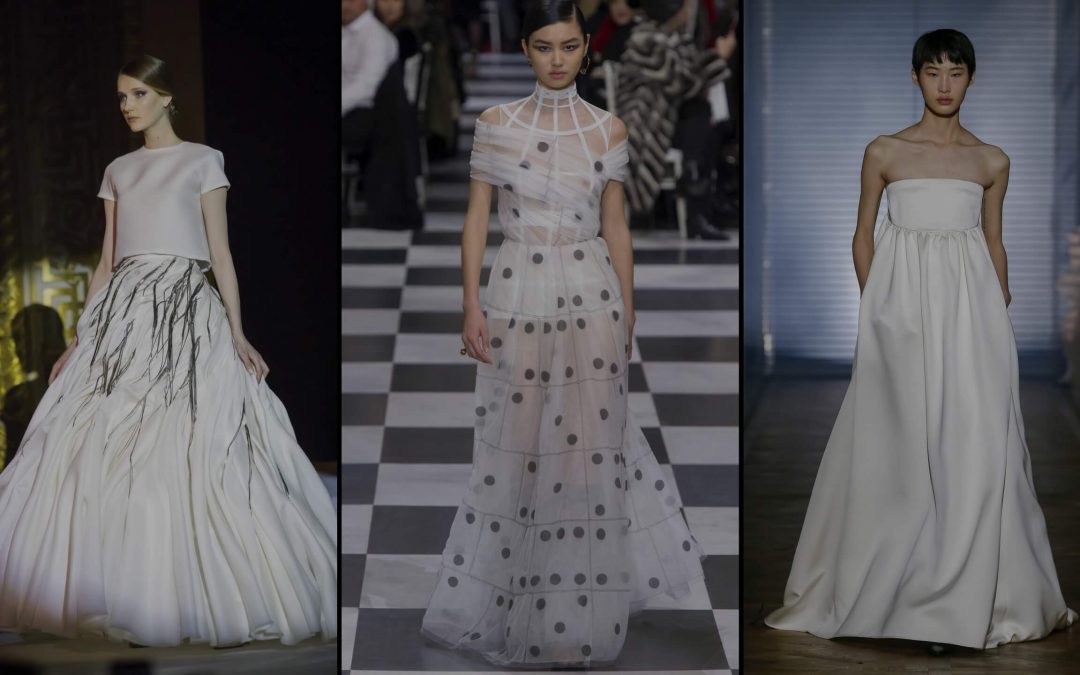The last Haute Couture week was so different. Its clearly showing that you can’t just take expensive silk, lace etc, make a dress from that and it will be Haute Couture. In fact, the knowledge of construction remains essential. This new aesthetics, calm, clean and sophisticated, affirms the positionnent of Paris Haute Couture being at the same time laboratory of ideas, wardrobe for music or movie stars and a real library of knowledge and skills. And the big star of the shows was the circle skirt.
The circle skirt is a full volume skirt with one or two seams on the side. The particularity of the circle skirt is that it’s cut in biais. The biais is the diagonal side of the fabric. The difficulty of constructing with biais is that there is no vertical or horizontal thread. And one of the most important rules of a good construction is that you should keep the proportions. How?
The trick of the circle skirt is that, in one hand, like any other garment, it should accentuate verticality. We are all walking vertically to the ground and if our clothes are not accentuating this, it will seem not straight. And on the other hand, it’s never really proportional because there are no vertical or horizontal thread. The only vertical line in the skirt is the seam side, and all the art of constructing a well-proportioned circle skirt is to balance the volume basing on the side seam.
Here is very beautiful example of a dress with circle skirt from Christian Dior Haute Couture.
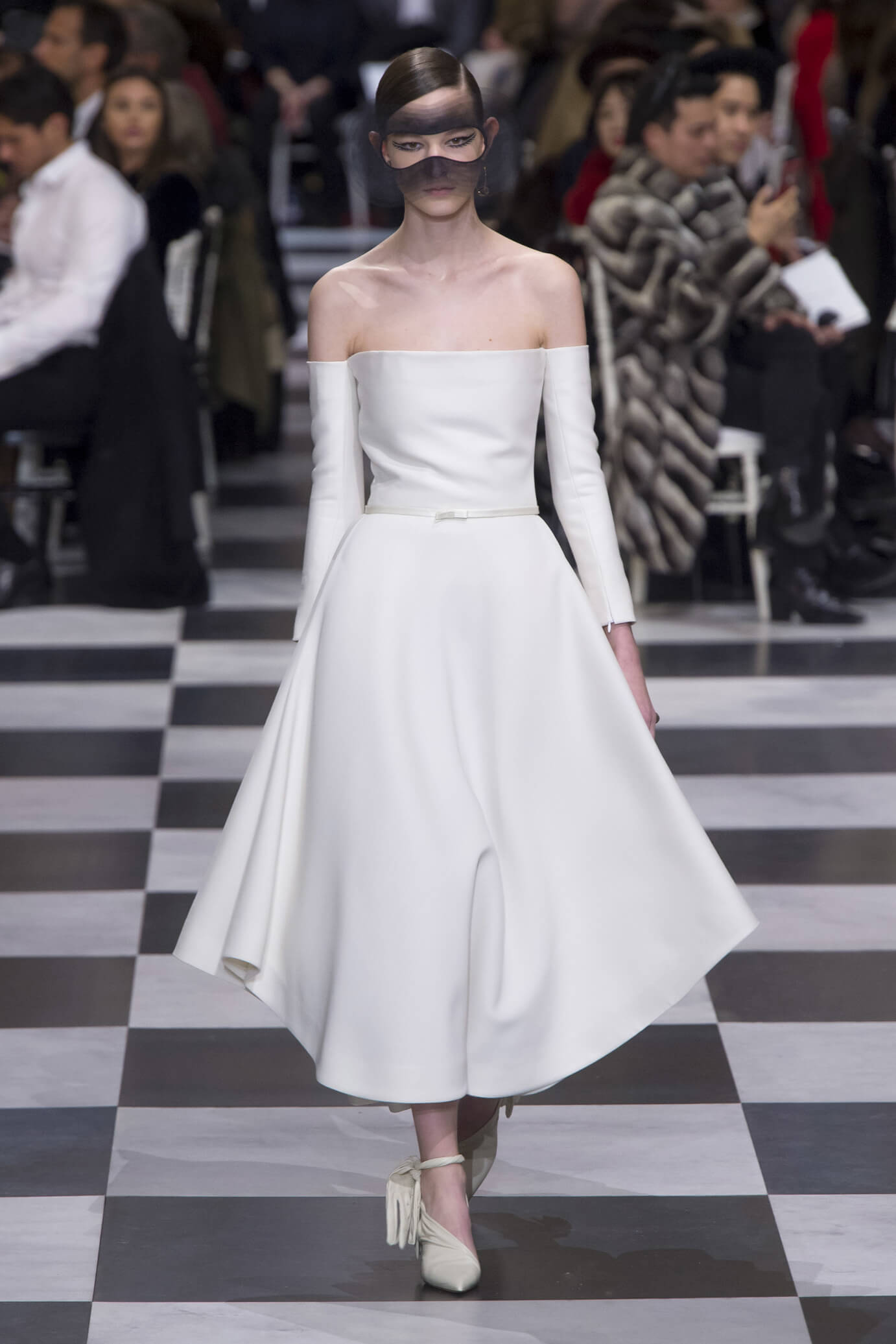
When looking closer at the dress, we can see a slight difference in how the fabric shines at the top and at the bottom of the dress. That’s because the fabric (that looks a lot like satin) is vertical/horizontal on the top and cut in biais in the bottom. A perfect biais cut gives a skirt a very particular lightness of the movement, underlined here by the white color of the skirt. The fabric is placing itself very naturally, in contrast with the sharpness of the top.
Here is another wonderful example of a circle skirt, attached to a bustier top, from Givenchy Haute Couture.

This dress looks very simple, but it can literally take hours to make.
First of all, look at how the skirt is attached to the top. There is no belt, waistband, no fabric to hide the seam on the waist. And of course we all know that, from the garment construction point of view, the waistline is one of 3 main lines of the garment that attracts most of the attention. By the way, the waistline here is high, we haven’t seen that on the runways for ages.
So the art here was to assemble the two part of the dress beautifully, without giving additional volume to the skirt.
As an example, look how the bustier is attached at the skirt in this draping example created by Professor Aurélie Vibet for the Draping Masterclass “Bustier Dress with a Circle Skirt”.
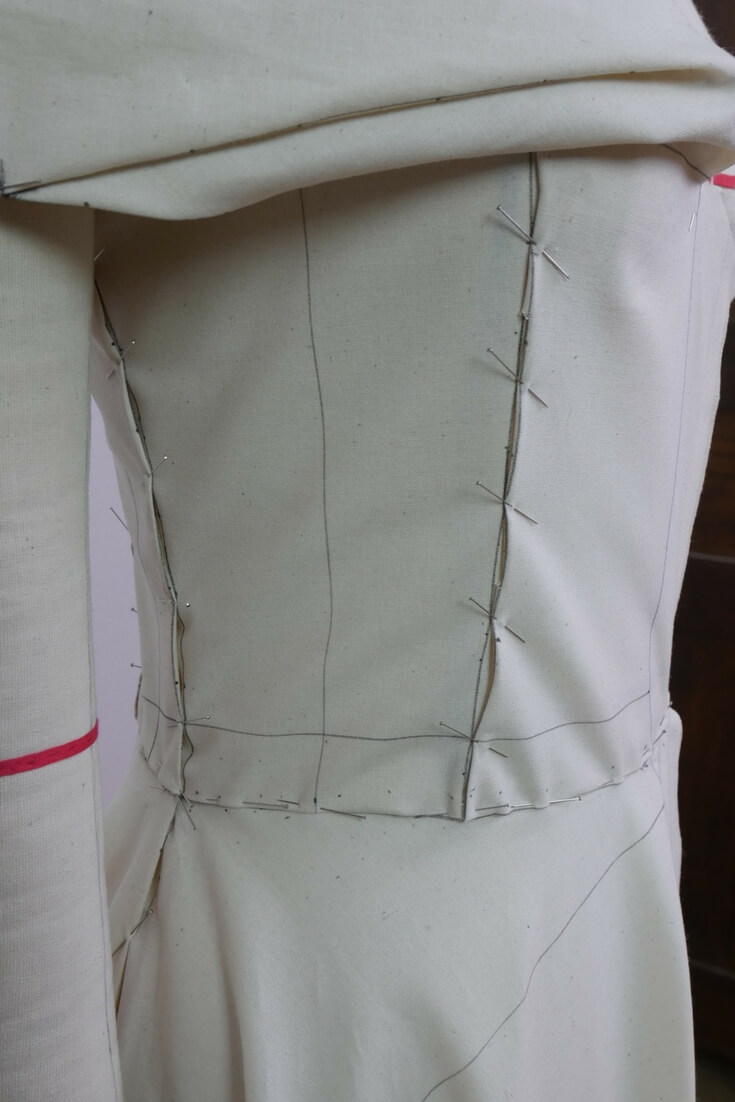
That’s another big challenge of the circle skirt – there is volume. And who says volume, says additional kilos. Especially when the dress is white like here. Hence, this dress is very elegant and sleek. Mystery?
Another example from Givenchy Haute Couture, bold, fine and very modern:
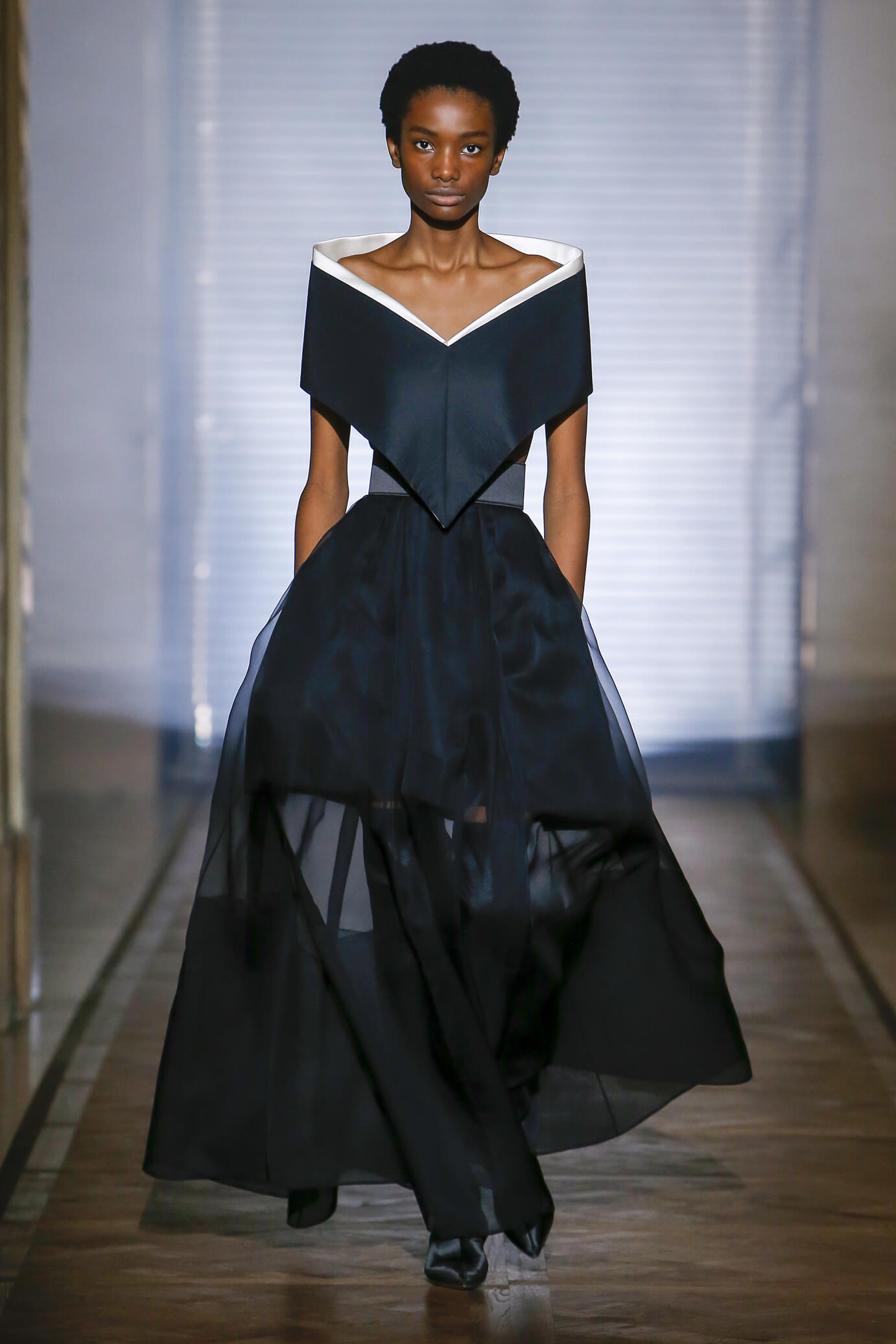
Here again, the question of balance is essential. The circle skirt is transparent and at the same time you can’t see the legs. Not only because of the boots, but also because a very large hem is meticulously sewn under it. The lightness of the fabric on the bottom is counterbalanced by the royal-looking collar on the top, the whole thing looking as if a graphic designer was inventing a new font.
To best way to reach this same softness/sharpness balance is to study the volume of your garment on the stage of draping your dress, when you can better see the proportions and easily change the volume of the dress.

And finally, look at this beauty from Giambattista Valli in semi-transparent bordeaux crêpe:
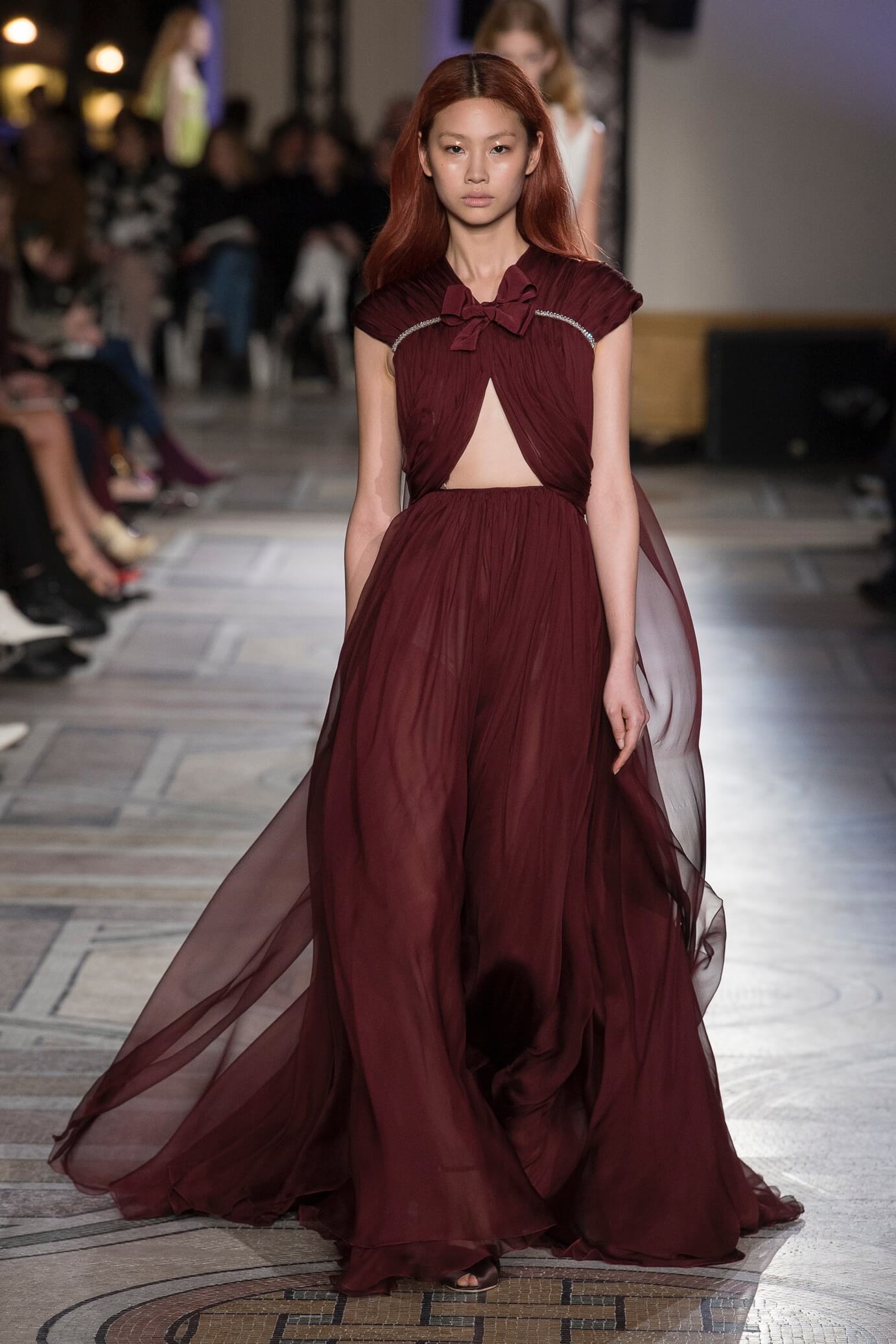
Same as for the white circle skirt at Givenchy Haute Couture, there are two challenges for the designer and his atelier. There is no belt or waistband. That makes extremely difficult to make a finishing of the top of the skirt look elegant and neat (if you don’t believe me, just try to do the same). And there is a pretty important volume, because, even if this fabric is light, there are two layers of the fabric. Still, the whole look is very light, refreshing and soft – exactly what you need for a marriage or party in a hot European summer.
So now you see that circle skirt looks very simple yet the construction of a good circle skirt takes hours and hours of work.
You can learn more about how to make a Haute Couture circle skirt with our « Bustier dress with a circle skirt » Draping Program with the Professor who teaches draping at Ecole de la Chambre Syndicale de la Couture Parisienne and who have worked 10 years as a highest skilled master at Christian Dior Haute Couture.
*photos from Vogue France
